
The Battle of Worcester took place on 3 September 1651 at Worcester, England and was the final battle of the English Civil War. Olive r Cromwell and the Parliamentarians defeated the Royalist, predominantly Scottish, forces of King Charles II. The 16,000 Royalist forces were overwhelmed by the 28,000 strong "New Model Army" of Cromwell
r Cromwell and the Parliamentarians defeated the Royalist, predominantly Scottish, forces of King Charles II. The 16,000 Royalist forces were overwhelmed by the 28,000 strong "New Model Army" of Cromwell
The king was aided by Scottish allies and was attempting to regain the throne that had been lost when his father Charles I was executed. The commander of the Scots, Sir David Leslie r Cromwell and the Parliamentarians defeated the Royalist, predominantly Scottish, forces of King Charles II. The 16,000 Royalist forces were overwhelmed by the 28,000 strong "New Model Army" of Cromwell
r Cromwell and the Parliamentarians defeated the Royalist, predominantly Scottish, forces of King Charles II. The 16,000 Royalist forces were overwhelmed by the 28,000 strong "New Model Army" of Cromwell
 , supported the plan of fighting in Scotland, where royal support was strongest. Charles, however, insisted on making war in England. He calculated that Cromwell's campaign north of the River Forth
, supported the plan of fighting in Scotland, where royal support was strongest. Charles, however, insisted on making war in England. He calculated that Cromwell's campaign north of the River Forth  would allow the main Scottish Royalist army which was south of the Forth to steal the march on the Roundhead New Model Army in a race to London. He hoped to rally not merely the old faithful Royalists, but also the overwhelming numerical strength of the English Presbyterians to his standard. He calculated that his alliance with the Scottish Presbyterian Covenanters (The Covenanters are so named because in a series of bands or covenants they bound themselves to maintain the Presbyterian doctrine and policy as the sole form of religion of their country.)
would allow the main Scottish Royalist army which was south of the Forth to steal the march on the Roundhead New Model Army in a race to London. He hoped to rally not merely the old faithful Royalists, but also the overwhelming numerical strength of the English Presbyterians to his standard. He calculated that his alliance with the Scottish Presbyterian Covenanters (The Covenanters are so named because in a series of bands or covenants they bound themselves to maintain the Presbyterian doctrine and policy as the sole form of religion of their country.) and his signing of the Solemn League and Covenant would encourage English Presbyterians to support him against the English Independent faction which had grown in power over the last few years. The Royalist army was kept well in hand, no excesses were allowed, and in a week the Royalists covered 150 miles in marked contrast to the
and his signing of the Solemn League and Covenant would encourage English Presbyterians to support him against the English Independent faction which had grown in power over the last few years. The Royalist army was kept well in hand, no excesses were allowed, and in a week the Royalists covered 150 miles in marked contrast to the 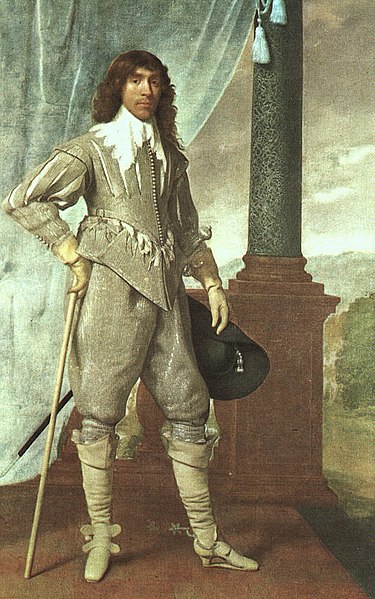 Duke of Hamilton's ill-fated expedition of 1648. On 8 August the troops were given a well-earned rest between Penrith
Duke of Hamilton's ill-fated expedition of 1648. On 8 August the troops were given a well-earned rest between Penrith and Kendal.
and Kendal.
But the Royalists were mistaken in supposing that the enemy was taken aback by their new move. Everything had been foreseen both by Cromwell and by the Council of State in Westminster. The latter had called out the greater part of the militia on 7 August. Lieutenant-General Charles Fleetwood
 began to draw together the midland contingents at Banbury.
began to draw together the midland contingents at Banbury. The London-trained bands turned out for field service no fewer than 14,000 strong. Every suspected Royalist
The London-trained bands turned out for field service no fewer than 14,000 strong. Every suspected Royalist was closely watched, and the magazines of arms in the country-houses of the gentry were for the most part removed into the strong places. On his part Cromwell had quietly made his preparations.
was closely watched, and the magazines of arms in the country-houses of the gentry were for the most part removed into the strong places. On his part Cromwell had quietly made his preparations.  Perth passed into his hands on 22 August and he brought back his army to Leith by 5 August.
Perth passed into his hands on 22 August and he brought back his army to Leith by 5 August. Thence he dispatched Lieutenant-General John Lambert
Thence he dispatched Lieutenant-General John Lambert with a cavalry corps to harass the invaders. Major-General Thomas Harrison
with a cavalry corps to harass the invaders. Major-General Thomas Harrison 
On the restoration of the monarchy A special court was appointed and in October 1660 those Regicides who were still alive and living in Britain were brought to trial. Ten were found guilty and were sentenced to be hung, drawn and quartered. This included Thomas Harrison, John Jones,
 John Carew
John Carew and Hugh Peters.
and Hugh Peters. Others executed included Adrian Scroope, Thomas Scot, Gregory Clement, Francis Hacker, Daniel Axtel and John Cook.
Others executed included Adrian Scroope, Thomas Scot, Gregory Clement, Francis Hacker, Daniel Axtel and John Cook. On 9 August, Charles was at Kendal, Lambert hovering in his rear, and Harrison marching swiftly to bar his way at the Mersey. Thomas Fairfax
On 9 August, Charles was at Kendal, Lambert hovering in his rear, and Harrison marching swiftly to bar his way at the Mersey. Thomas Fairfax emerged for a moment from his retirement to organize the Yorkshire levies, and the best of these as well as of the Lancashire, Cheshire and Staffordshire militias were directed upon Warrington,
emerged for a moment from his retirement to organize the Yorkshire levies, and the best of these as well as of the Lancashire, Cheshire and Staffordshire militias were directed upon Warrington, which Harrison reached on 15 August, a few hours in front of Charles's advanced guard. Lambert too, slipping round the left flank of the enemy, joined Harrison, and the English fell back (16 August), slowly and without letting themselves be drawn into a fight, along the London road.
which Harrison reached on 15 August, a few hours in front of Charles's advanced guard. Lambert too, slipping round the left flank of the enemy, joined Harrison, and the English fell back (16 August), slowly and without letting themselves be drawn into a fight, along the London road.
Cromwell meanwhile, leaving George Monck
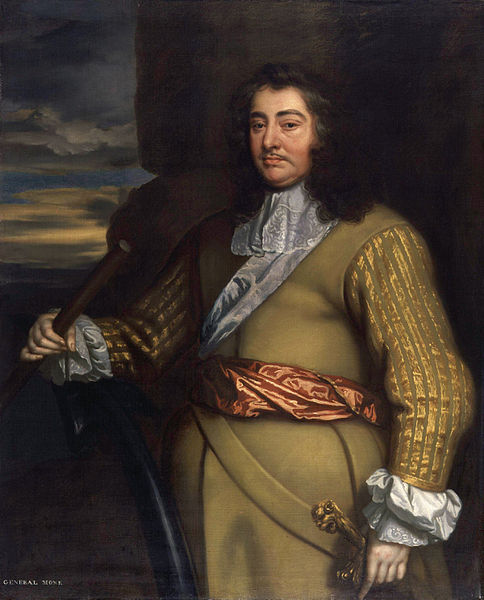 with the least efficient regiments to carry on the war in Scotland, had reached the river Tyne
with the least efficient regiments to carry on the war in Scotland, had reached the river Tyne in seven days, and thence, marching 20 miles a day in extreme heat with the country people carrying their arms and equipment the regulars entered Ferrybridge
in seven days, and thence, marching 20 miles a day in extreme heat with the country people carrying their arms and equipment the regulars entered Ferrybridge 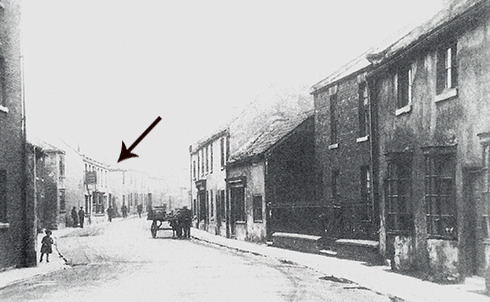 on 19 August, at which date Lambert, Harrison and the north-western militia were about Congleton.
on 19 August, at which date Lambert, Harrison and the north-western militia were about Congleton. It seemed probable that a great battle would take place between Lichfield
It seemed probable that a great battle would take place between Lichfield and Coventry on or just after 25 August and that Cromwell, Harrison, Lambert and Fleetwood would all take part in it. But the scene and the date of the denoue
and Coventry on or just after 25 August and that Cromwell, Harrison, Lambert and Fleetwood would all take part in it. But the scene and the date of the denoue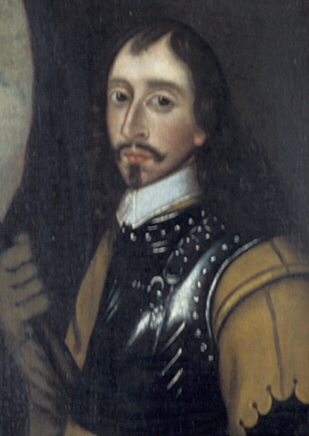
Charles arrived at Worcester on 22 August and spent five days in resting the troops, preparing for further operations, and gathering and arming the few recruits who came in. The delay was to prove fatal; it was a necessity of the case foreseen and accepted when the march to Worcester had been decided upon, and had the other course, that of marching on London via Lichfield, been taken the battle would have been fought three days earlier with the same result.

Cromwell, the lord general, had during his march south thrown out successively two flying columns under Colonel Robert Lilburne
 to deal with the Lancashire Royalists under the Earl of Derby
to deal with the Lancashire Royalists under the Earl of Derby . Lilburne entirely routed a Lancashire detachment of the enemy on their way to join the main Royalist army at the Battle of Wigan Lane
. Lilburne entirely routed a Lancashire detachment of the enemy on their way to join the main Royalist army at the Battle of Wigan Lane on 25 August and as affairs turned out Cromwell merely shifted the area of his concentration two marches to the south-west, to Evesham.
on 25 August and as affairs turned out Cromwell merely shifted the area of his concentration two marches to the south-west, to Evesham. Early on 28 August, Lambert surprised the passage of the Severn at Upton,
Early on 28 August, Lambert surprised the passage of the Severn at Upton, 6 miles below Worcester, and in the action which followed Massey was severely wounded. Fleetwood followed Lambert.
6 miles below Worcester, and in the action which followed Massey was severely wounded. Fleetwood followed Lambert. The enemy was now only 16,000 strong and disheartened by the apathy with which they had been received in districts formerly all their own. Cromwell, for the only time in his military career, had a two-to-one numerical superiority.
The enemy was now only 16,000 strong and disheartened by the apathy with which they had been received in districts formerly all their own. Cromwell, for the only time in his military career, had a two-to-one numerical superiority.
From Petite Guerre Blog . Check this out its brilliant. Heres what the owners says about English Civil war pieces
A fellow gamer and I were commiserated over how the scale of figures that appeal to us seems to have a direct proportional relationship to our accumulating years. Furthermore, I've always shied away from plastics simply because of the problem of keeping paint attached to figures that are frequently manhandled. But with the increasing availability of decent 54mm plastic figures and my own decreasing visual acuity, I figured it was time to try something new.
manhandled. But with the increasing availability of decent 54mm plastic figures and my own decreasing visual acuity, I figured it was time to try something new.  I've also had an urge to try some new periods but didn't want to invest a lot of money in metal figures.
I've also had an urge to try some new periods but didn't want to invest a lot of money in metal figures.  So after seeing what was available in 54mm plastics I decided to experiment with either the American Revolution or the English Civil War.
So after seeing what was available in 54mm plastics I decided to experiment with either the American Revolution or the English Civil War.  Though I must admit that the Napoleonics and even the Spanish-American War caught my attention. Just by luck I happened to find a box of Call to Arms
Though I must admit that the Napoleonics and even the Spanish-American War caught my attention. Just by luck I happened to find a box of Call to Arms  English Civil War pikemen in my local hobbyshop. Figured it was worth $10 to experiment with plastic painting techniques. Besides, could I really do better than $0.50 per man in any visible scale? These photos show my first real attempt at converting. True, I've previously amputated a few arms and reattached them, but this is the first head swap and my first attempt at adding new features. Luckily, two of the inconvenient ACTA pikemen work well together. The converted figure is the swilling pikeman, plus the head and left arm of another figure. The swiller's helmet has been carved off and the new head is attached with a small length of straight pin and glued using Aleene's Tacky Glue. The arm is simply attached with Aleene's. I think this will be strong enough since there is ample contact area as the hand lies along the belt line of the torso.
English Civil War pikemen in my local hobbyshop. Figured it was worth $10 to experiment with plastic painting techniques. Besides, could I really do better than $0.50 per man in any visible scale? These photos show my first real attempt at converting. True, I've previously amputated a few arms and reattached them, but this is the first head swap and my first attempt at adding new features. Luckily, two of the inconvenient ACTA pikemen work well together. The converted figure is the swilling pikeman, plus the head and left arm of another figure. The swiller's helmet has been carved off and the new head is attached with a small length of straight pin and glued using Aleene's Tacky Glue. The arm is simply attached with Aleene's. I think this will be strong enough since there is ample contact area as the hand lies along the belt line of the torso. The upper arm is reconstructed with Squadron Shop Green Stuff. This was my first use of Green Stuff and I was not entirely satisfied with it. I found it to be fairly tacky, and it did not have enough body to it to allow much in the way of sculpting while moist. Also, it contains tuolene and is therefore somewhat smelly and not very healthful for use in my poorly ventilated basement work area. Still, having the ability to carve and sand it once dry may override all these detriments. And I have to admit that my tube of green stuff is old (though I had never opened it) and the basement is cold place to work. These may account for the less than desirable consistency of the Green Stuff. Or maybe I'm just spoiled.

The officer's sash is made of plasticene clay. I found this much easier to work with and was quite happy with the 'scupltability' of it. Once I finished sculpting I coated the plasticene with CA (cyanoacrylate, e.g., Super Glue) to give it a nice hard shell. Once this was dry, and as part of my painting routine, I coated the entire figure with Aleene's and then a coat of acrylic varnish. I believe the two glues and varnish will give the plasticene the durability needed for a wargaming figure. Only time will tell." This is from the great blog Petit Guerre plus photos

On 30 August Cromwell delayed the start of the battle to give time for two pontoon bridges to be constructed one over the Severn and the other over the Teme close to their confluence. The delay allowed Cromwell to launch his attack on 3 September one year to the day since his victory at the Battle of Dunbar.

Cromwell took his measures deliberately. Lilburne from Lancashire and Major Mercer with the Worcestershire horse were to secure Bewdley Bridge,
 20 miles (32 km) north of Worcester and on the enemy's line of retreat.[3] Fleetwood was to force his way across the Teme
20 miles (32 km) north of Worcester and on the enemy's line of retreat.[3] Fleetwood was to force his way across the Teme and attack St John's, the western suburb of Worcester. While Lambert commanded the Eastern Flank of the Army which would advance and encircle the Eastern walls of Worcester. Cromwell would lead the attack on the southern ramparts of the city.
and attack St John's, the western suburb of Worcester. While Lambert commanded the Eastern Flank of the Army which would advance and encircle the Eastern walls of Worcester. Cromwell would lead the attack on the southern ramparts of the city.The assault started on the morning of 3 September and initially the initiative lay with the Parliamentarians. Fleetwood forced the passage of the Teme over the pontoon bridges against Royalists under the command of Major General Montgomery. Colonel Richard Dean's initial attempts to cross the Powick Bridge
 (where Prince Rupert of the Rhine had won the Battle of Powick Bridge his first victory in 1642) failed against stubborn resistance by the Royalists (many of whom were battle-hardened Scottish Highlanders) commanded by Colonel Keith.
(where Prince Rupert of the Rhine had won the Battle of Powick Bridge his first victory in 1642) failed against stubborn resistance by the Royalists (many of whom were battle-hardened Scottish Highlanders) commanded by Colonel Keith. By force of arms and numbers the Royalist army was pushed backward by the New Model Army with Cromwell on the eastern bank of the Severn and Fleetwood on the western sweeping in a semicircle four miles long up toward Worcester.
By force of arms and numbers the Royalist army was pushed backward by the New Model Army with Cromwell on the eastern bank of the Severn and Fleetwood on the western sweeping in a semicircle four miles long up toward Worcester.
The Royalists contested every hedgerow around Powick meadows.
 to aid Fleetwood. Charles II from his vantage point on top of Worcester cathedral's tower realised that an opportunity to attack the now-exposed eastern flank of the Parliamentary army. As the defenders on the Western side of the city retreated in good order into the city (although during this maneuver Keith was captured and Montgomery was badly wounded), Charles ordered two sorties to attack the Parliamentary forces east of the city. The north-eastern sortie through St. Martin's Gate
to aid Fleetwood. Charles II from his vantage point on top of Worcester cathedral's tower realised that an opportunity to attack the now-exposed eastern flank of the Parliamentary army. As the defenders on the Western side of the city retreated in good order into the city (although during this maneuver Keith was captured and Montgomery was badly wounded), Charles ordered two sorties to attack the Parliamentary forces east of the city. The north-eastern sortie through St. Martin's Gate was commanded by the Duke of Hamilton
was commanded by the Duke of HamiltonWorcester's city walls are a sequence of defensive structures built around the city of Worcester in England between the 1st and 17th centuries. The first walls to be built around Worcester were constructed by the Romans. These early walls lasted beyond the fall of the Empire,

After the Norman conquest of England in the 11th century a motte and baileycastle was constructed on the south side of the city, but the Norman rulers continued to use the older burh walls, despite the city having expanded beyond these defences in the north and south-east. During the years of the Anarchy in the 1140s, Worcester was successfully attacked several times; after the war a new city wall was built to improve the city's defences. The new walls, completed by the early 13th century, were constructed of stone and had three main gates. They were maintained in good condition into the 17th century.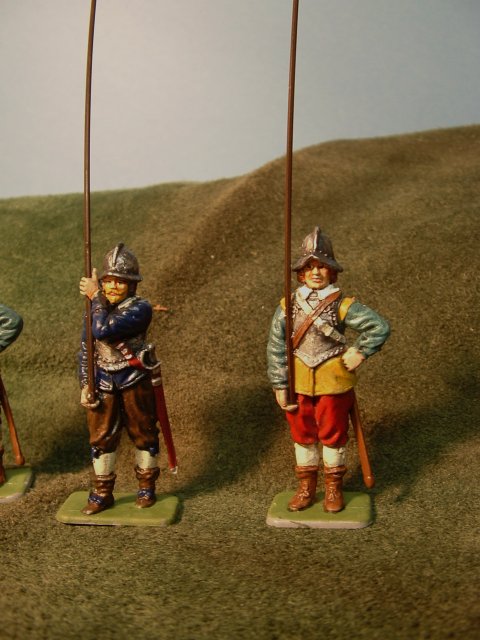
During the English Civil War in the 1640s the old medieval walls were reinforced with modern earthwork bastions and an outlying fort, called a sconce. Worcester changed hands several times during the conflict, and after the war ended the newer fortifications were dismantled. During the 18th century the older medieval stone walls and gatehouses were sold and mostly destroyed: by the 20th century, few parts survived. Post-war archaeology in the 1950s and 1960s and construction work in the 1970s revealed previously hidden stretches of the wall, and in the 21st century plans have been drawn up to improve the conservation and maintenance of this historic monument.
 and attacked the Parliamentary lines at Perry Wood. The south-eastern one through Sidbury Gate was led by Charles II and attacked Red Hill.
and attacked the Parliamentary lines at Perry Wood. The south-eastern one through Sidbury Gate was led by Charles II and attacked Red Hill. The Royalist cavalry under the command of David Leslie that was gathered on Pitchcroft meadow on the northern side of the city did not receive orders to aid the sorties and Leslie chose not to do so under his own initiative.
The Royalist cavalry under the command of David Leslie that was gathered on Pitchcroft meadow on the northern side of the city did not receive orders to aid the sorties and Leslie chose not to do so under his own initiative.  Cromwell seeing the difficulty that his east flank was under rushed back over the Severn pontoon bridge with three brigades of troops to reinforce the flank.
Cromwell seeing the difficulty that his east flank was under rushed back over the Severn pontoon bridge with three brigades of troops to reinforce the flank.
Although they were pushed back, the Parliamentarians under Lambert were too numerous and experienced to be defeated by such a move. After an hour in which the Parliamentarians initially retreated under the unexpected attack, when reinforced by Cromwell's three brigades, they in turn forced the Royalists to retreat back toward the city.
The Royalist retreat turned into a rout in which Parliamentarian and Royalist forces intermingled and skirmished up to and into the city. The Royalist position became untenable when the Essex militia stormed and captured Fort Royal,

(a redoubt on a small hill to the south-east of Worcester overlooking the Sidbury gate), turning the Royalist guns to fire on Worcester.
.jpg)
Once in the city, Charles II removed his armour and found a fresh mount; he attempted to rally his troops but it was to no avail. A desperate Royalist cavalry charge down Sidbury Street and High Street, led by the Earl of Cleveland above sidbury bridge
.jpg/220px-Thomas_Wentworth,_1st_Earl_of_Strafford_by_Sir_Anthony_Van_Dyck_(2).jpg) and Major Careless
and Major Careless amongst others, allowed King Charles to escape the city by St. Martin's Gate.
amongst others, allowed King Charles to escape the city by St. Martin's Gate.The defences of the city were stormed from three different directions as darkness came on, regulars and militia fighting with equal gallantry. Most of the few thousands of the Royalists who escaped during the night were easily captured by Lilburne and Mercer, or by the militia which watched every road in Yorkshire and Lancashire. Even the country people brought in scores of prisoners, for officers and men alike, stunned by the suddenness of the disaster, offered no resistance.

 was executed, while the other English prisoners were conscripted into the New Model Army and sent to Ireland. Around 8,000 Scottish prisoners were deported to New England, Bermuda, and the West Indies to work for landowners as indentured labourers. Parliamentary casualties numbered in the low hundreds.
was executed, while the other English prisoners were conscripted into the New Model Army and sent to Ireland. Around 8,000 Scottish prisoners were deported to New England, Bermuda, and the West Indies to work for landowners as indentured labourers. Parliamentary casualties numbered in the low hundreds.Charles II escaped
 after many adventures, including one famous incident
after many adventures, including one famous incident where he hid from a Parliamentarian patrol in an oak tree in the grounds of Boscobel House
where he hid from a Parliamentarian patrol in an oak tree in the grounds of Boscobel House Charles had lost to Cromwell's New Model Army at the Battle of Worcester on 3 September 1651 and was a wanted man. A reward of £1,000 was offered for the capture of the King, and it is likely that the King and anyone helping him would have been executed for treason, if caught. The King had a distinctive appearance: very swarthy and six foot two inches tall (1.88 metres), at a time when most men were under 5'10. Furthermore there were cavalry patrols specifically tasked with finding the King. Fortunately for Charles, the Catholics had an organisation with 90 years of experience in keeping secrets and hiding people. However, it was also illegal for Catholics to travel more than five miles away from their homes without a pass from the Sheriff of the County, increasing the hazards faced by those who helped him.Charles fled the city of Worcester in the company of Lord Wilmot,
 Lord Derby, Charles Giffard (or Gifford) and many others.Charles decided to head into Shropshire, a Catholic stronghold with many hiding places. They stopped after five miles at an inn in Ombersley
Lord Derby, Charles Giffard (or Gifford) and many others.Charles decided to head into Shropshire, a Catholic stronghold with many hiding places. They stopped after five miles at an inn in Ombersley (now the Kings Arms) for refreshments. It was felt that it would be safer for the King to travel almost alone and so he left the main group near Hartlebury
(now the Kings Arms) for refreshments. It was felt that it would be safer for the King to travel almost alone and so he left the main group near Hartlebury  where the road forks. Charles headed right, towards Stourbridge. Lord Derby went left with the main group towards Kidderminster only to be routed by a troop of Parliamentary cavalry. Derby was captured and later executed.
where the road forks. Charles headed right, towards Stourbridge. Lord Derby went left with the main group towards Kidderminster only to be routed by a troop of Parliamentary cavalry. Derby was captured and later executed.Charles continued on towards Stourbridge
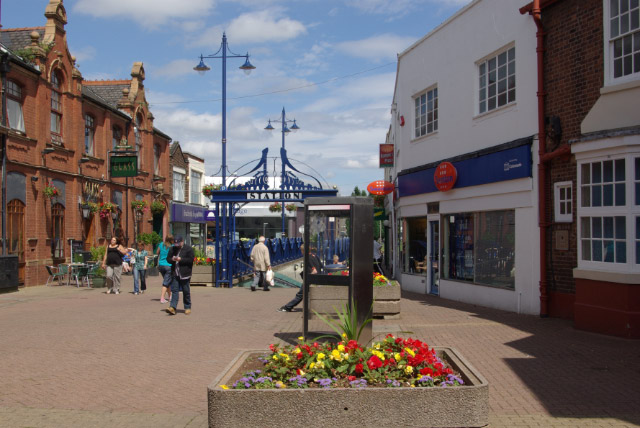 through the parish of Chaddesley Corbett
through the parish of Chaddesley Corbett  and past the parishes of Hagley and Pedmore. Stourbridge was garrisoned by Parliamentary troops but Charles was able to pass without the alarm being sounded,(it has also been suggested that Charles took a slightly different route and did not cross the Stour at Stourbridge
and past the parishes of Hagley and Pedmore. Stourbridge was garrisoned by Parliamentary troops but Charles was able to pass without the alarm being sounded,(it has also been suggested that Charles took a slightly different route and did not cross the Stour at Stourbridge but near a village called Wolverley
but near a village called Wolverley  after passing through a dell below Lea Castle
after passing through a dell below Lea Castle and over Hay Bridge).Tradition has it the King halted at Whittington Manor, now the Whittington Inn on the A449. From there he passed through Kinver into Staffordsire. The party stopped again at Wordsley before arriving at White Ladies Priory on Giffard’s estate at Boscobel in the early hours of 4 September.[
and over Hay Bridge).Tradition has it the King halted at Whittington Manor, now the Whittington Inn on the A449. From there he passed through Kinver into Staffordsire. The party stopped again at Wordsley before arriving at White Ladies Priory on Giffard’s estate at Boscobel in the early hours of 4 September.[
After the battle, Cromwell returned to Aylesbury,
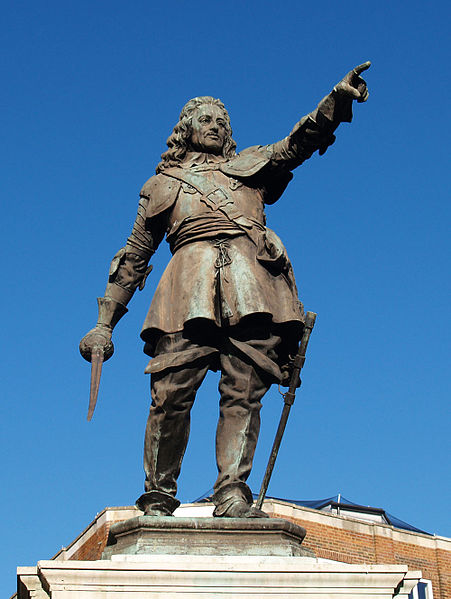 Buckinghamshire, one of the parliamentarian strongholds and close to the seat of his late cousin the civil war hero
Buckinghamshire, one of the parliamentarian strongholds and close to the seat of his late cousin the civil war hero John Hampden. He stayed at the aptly named King's Head Inn, Aylesburyand it was here that he received the thanks of Parliament for his final defeat of the Royalists.
John Hampden. He stayed at the aptly named King's Head Inn, Aylesburyand it was here that he received the thanks of Parliament for his final defeat of the Royalists.
The result of the battle was, in brief, one of those rare victories in which a pursuit is superfluous. Cromwell thought the victory was the greatest of all the favours, or mercies, given to him by God. He famously wrote to William Lenthall,
 the Speaker of the House of Commons "The dimensions of this mercy are above my thoughts. It is, for aught I know, a crowning mercy".The phase "Crowning Mercy" is frequently linked to the battle, descriptive of the complete destruction of the last Royalist army and the end of the English Civil War.
the Speaker of the House of Commons "The dimensions of this mercy are above my thoughts. It is, for aught I know, a crowning mercy".The phase "Crowning Mercy" is frequently linked to the battle, descriptive of the complete destruction of the last Royalist army and the end of the English Civil War.The Parliamentary militia were sent home within a week. Cromwell, who had ridiculed "such stuff" six months ago, knew them better now. "Your new raised forces," he wrote to the Rump Parliament, "did perform singular good service, for which they deserve a very high estimation and acknowledgement" The New England preacher Hugh Peters
 gave the militia a rousing farewell sermon "when their wives and children should ask them where they had been and what news, they should say they had been at Worcester, where England's sorrows began, and where they were happily ended", referring to the first clash of the Royalist and Parliamentarian Armies at the Battle of Powick Bridge on 23 September 1642, almost exactly nine years before.
gave the militia a rousing farewell sermon "when their wives and children should ask them where they had been and what news, they should say they had been at Worcester, where England's sorrows began, and where they were happily ended", referring to the first clash of the Royalist and Parliamentarian Armies at the Battle of Powick Bridge on 23 September 1642, almost exactly nine years before.
Before the battle King Charles II contracted the Worcester Clothiers to outfit his army with uniforms but was unable to pay the £453.3s bill. In June 2008 Charles, Prince of Wales paid off the 357 year old debt.


No comments:
Post a Comment